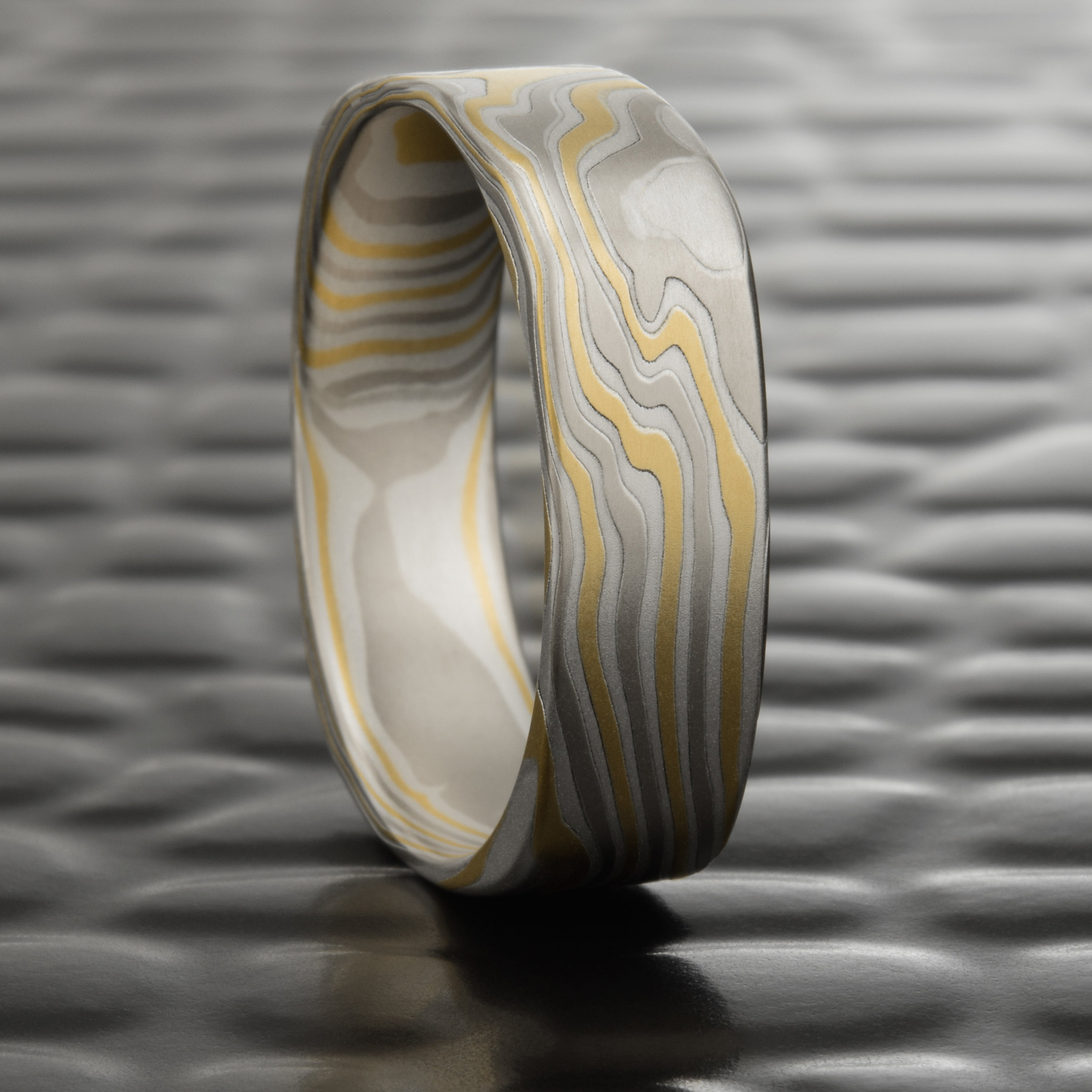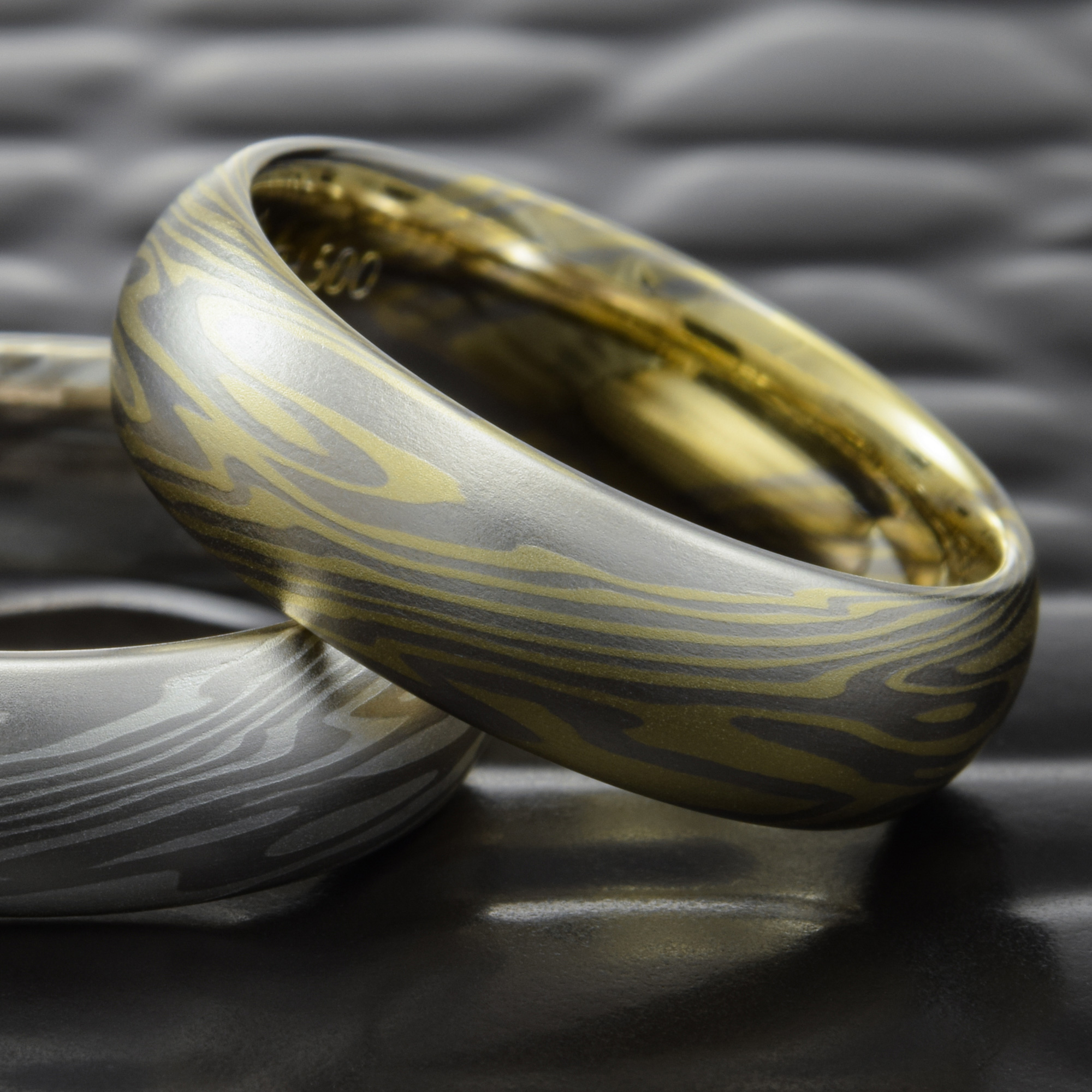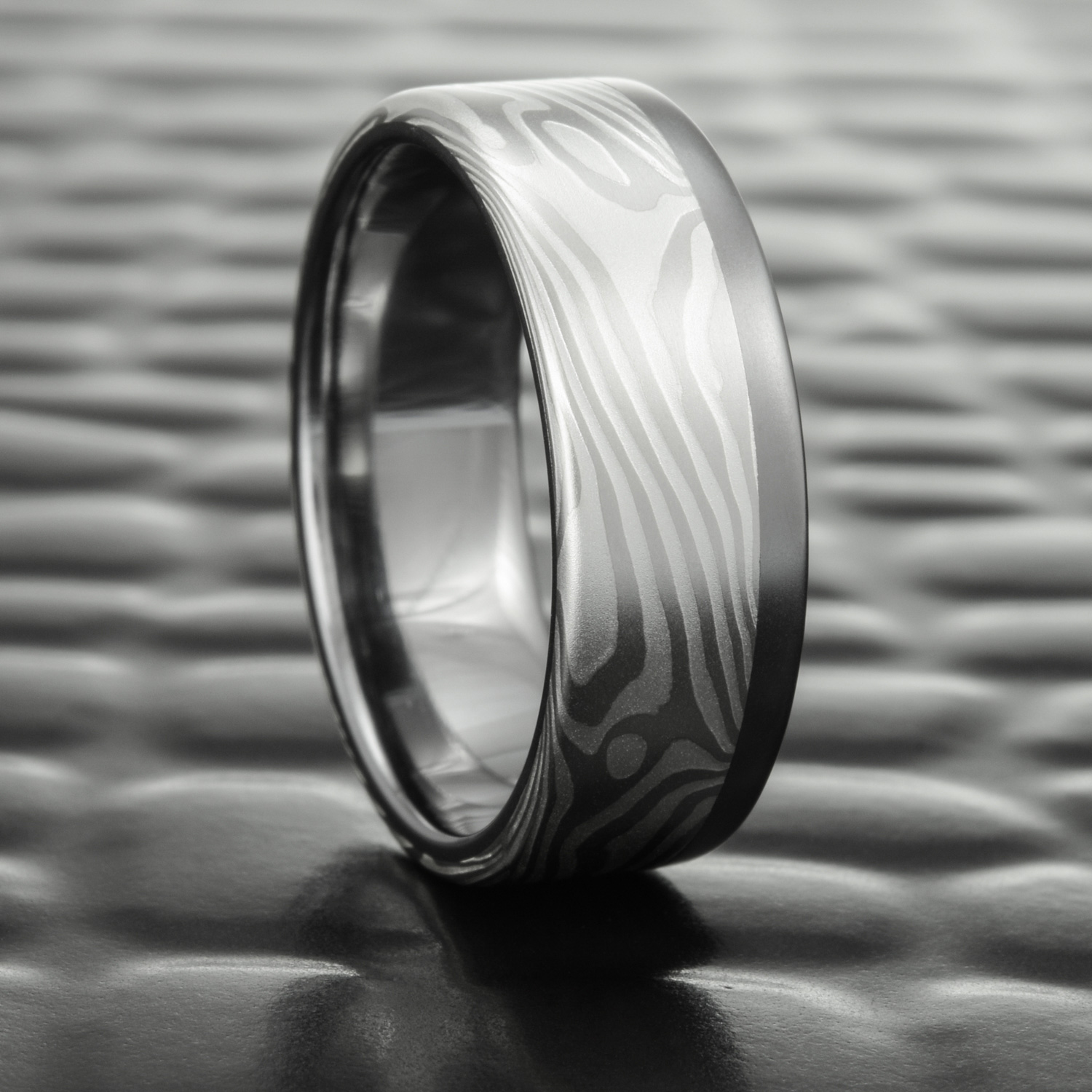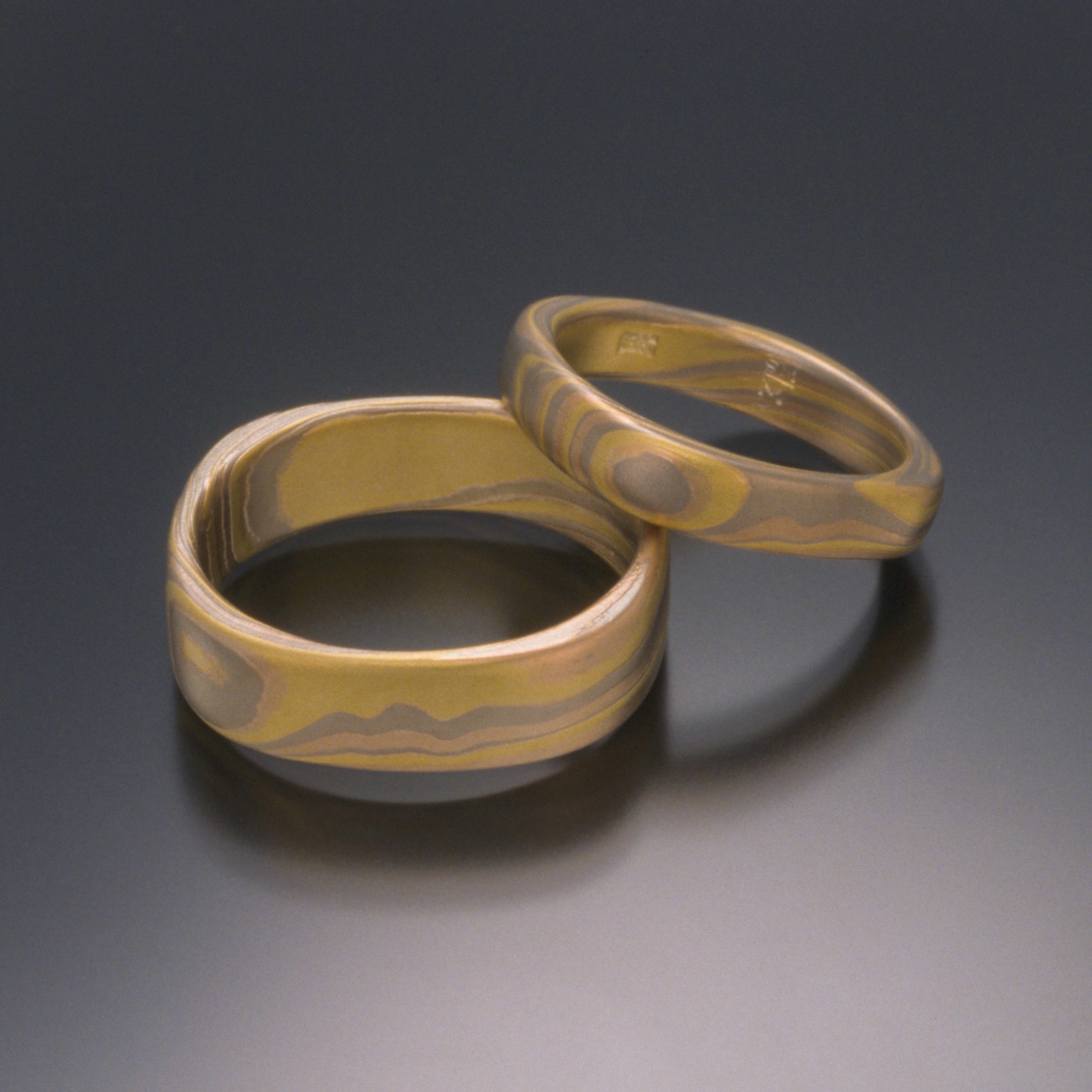Mokume Gane Basics
Mokume Bonding techniques — an overview for Jewelers and Metalsmiths
Foundation Series: “Before” by Jack da Silva. Copper, kuromido, and Sierra white granite.
“If the technique of mokume gane is to develop, it needs to be subjected to many different approaches”
A Mokume Gane bonding process for every Craftsman
There are many different approaches to the creation of mokume gane, and while most serious craftsmen working in this medium have their own favorite way, they share many similarities. The main differences to these approaches are distinguished by the way in which the layers of metal are bonded together. These include solder bonding, and two different kinds of diffusion bonding. Let’s take a brief initial look at these processes.
Solder Bonding
When I first began working with mokume gane in the early 1970s, I was immediately taken with the technique, not only with the almost magical patterning process, but with the whole operation from beginning to end. The endless possibilities (and problems) that mokume offered were immensely challenging and satisfying to me. At the time, the laminating process in vogue required sweat soldering two sheets of contrasting colored metal together, then rolling this out with a rolling mill to twice its original length. It was then cut in half and the two halves were sweat-soldered back together again.
Shell Series Conch Brooch by Rosemary Gould. Shibuichi, copper, and fine silver with pearls and garnet. Photo: David Albrecht
The process was repeated until the desired number of layers in the billet had been achieved. I remember there was a certain amount of prestige associated with being able to make a 128 layer sheet of mokume. Not that layers this thin were particularly beautiful, but rather, everyone in the shop recognized the amount of suffering you had endured to take the solder method through to that extreme.
Many of you may have already tried the solder method, and for those that haven’t, later in this book, Alistair McCallum has some great tips for producing high quality laminations by this process. However, because it is virtually impossible to solder layers of the laminate together without trapping gas and flux between them, blisters between layers are common and laborious to repair. In addition, because of the mechanical properties of silver solder alloys, bonds between the metals are prone to fail under the stress of manipulation or when soldering the finished laminate. The whole process can be time-consuming and potentially very frustrating. Don’t get me wrong; there were, and still are, some beautiful things made in this manner, but I believe there is a better way.
Liquid Phase Diffusion Bonding
Most of the mokume created today and throughout history probably falls into this category. It is the process by which pieces of differing metals are joined without the use of a lower melting temperature interlayer. Instead of sandwiching a piece of solder material between the layers, the two parent metals, through the process of diffusion, form a third alloy at the planes of contact. This alloy liquifies and fuses the layers together. Depending on the metals in the billet, this may be only a partial slushy state or it may be a completely liquid eutectic alloy of the two metals in contact.
Phase diagram for copper and silver.
The eutectic point of two metals is the point at which the concentration of atoms from both metals has reached an optimum percentage and creates an alloy that has the lowest possible melting point for any combination of these two specific metals. As in pure metals, this point is defined by a complete absence of any partially liquid phase, a temperature at which the alloy goes from completely liquid to completely solid with no intermediate, slushy stage.
Some combinations of metals used for mokume gane do not create a liquid eutectic alloy at the contacting metal surfaces, but must be joined by bringing one of the parent metals to a partially liquid phase. At this time, bonding occurs by a process similar to brazing or soldering, where liquid metal from the lower melting temperature layer flows onto the other and bond the pieces together. Metallurgists use phase diagrams to map the different phases of binary (two metal) and ternary (three metal) alloys.
Practically speaking, the eutectic point of an alloy is what we sometimes observe when we see the "sweating" of metals when bonding mokume gane, or the "flash" of fusion during the process granulation. An example of the partial liquid phase of an alloy would be the mushy state sterling silver goes through when melting in preparation for casting, and encompasses the state of the metal between the melting point and the flow point.
Custom made digital kiln for bonding mokume gane.
Solid State Diffusion Bonding
Solid State Diffusion Bonding is like magic. It is the permanent bonding of different metals that occurs given the proper conditions at a temperature well below the melting, or eutectic point of the metals involved. It relies on an adequate exchange of atoms between the parent metals to create a permanent bond by growing new metal crystals or grains across the weld zone. Because the eutectic point is never reached, no discernible third alloy layer is created. Cleanliness and an absolute control of the atmosphere around the metal are essential to achieve this kind of bond. Solid State Diffusion Bonding takes longer than Liquid Phase Diffusion Bonding and requires much more sophisticated equipment.
Solder bonded mokume will be touched on briefly, using both sheet and wire methods; however, both liquid, and solid diffusion bonding techniques will be demonstrated, discussed, dissected, and, hopefully, digested thoroughly.
NEW LAYERS — WHAT WE’VE LEARNED SINCE
There is a lot to say here to update the information included in the book with new firing methods, materials and approaches. Please stay tuned!
FROM THE BOOK’S GALLERY
©2000-2019 STEVEN JACOB INC. All rights reserved. Copyrighted materials – no portion to be reproduced without written permission from STEVEN JACOB INC.






















